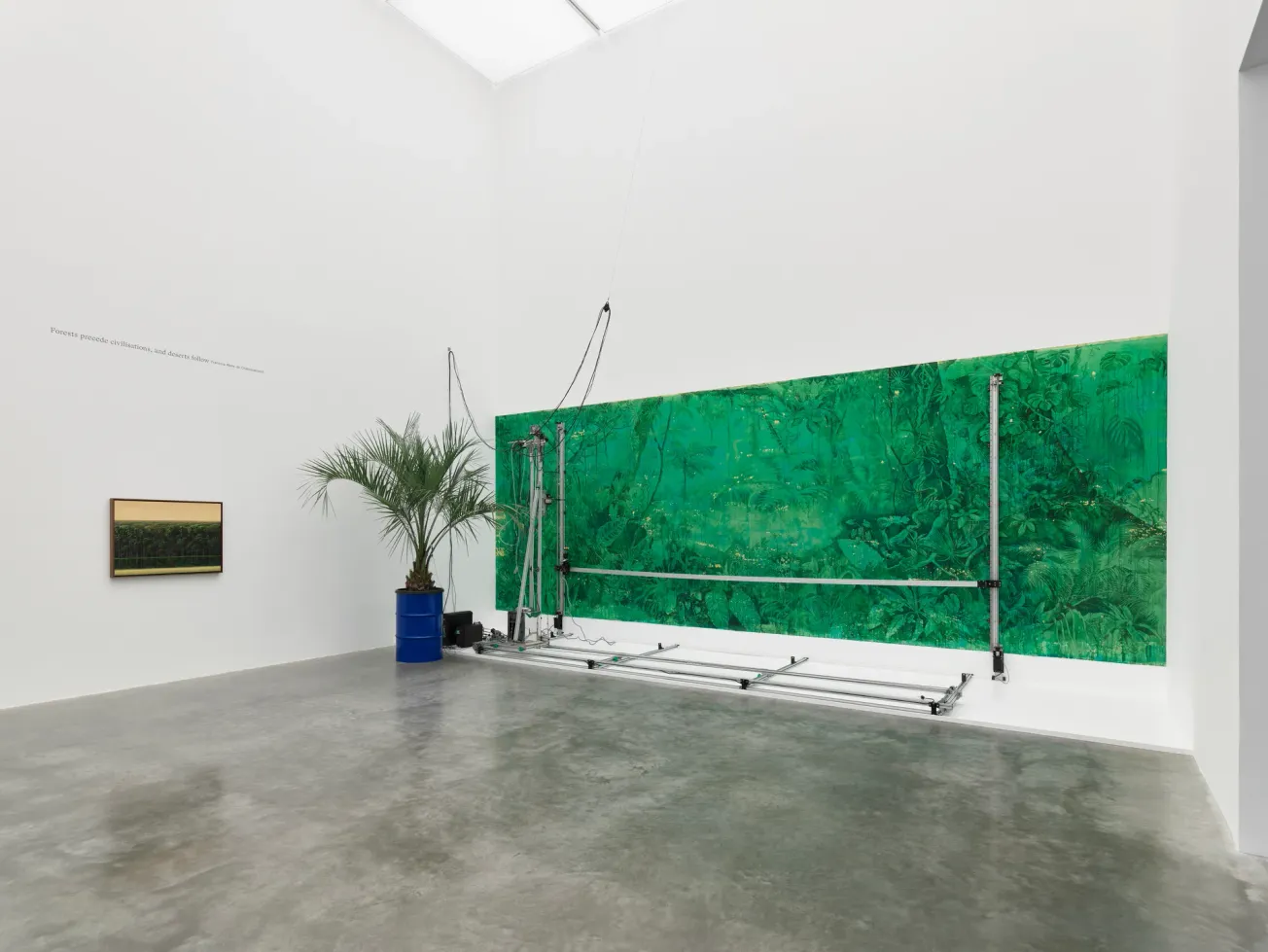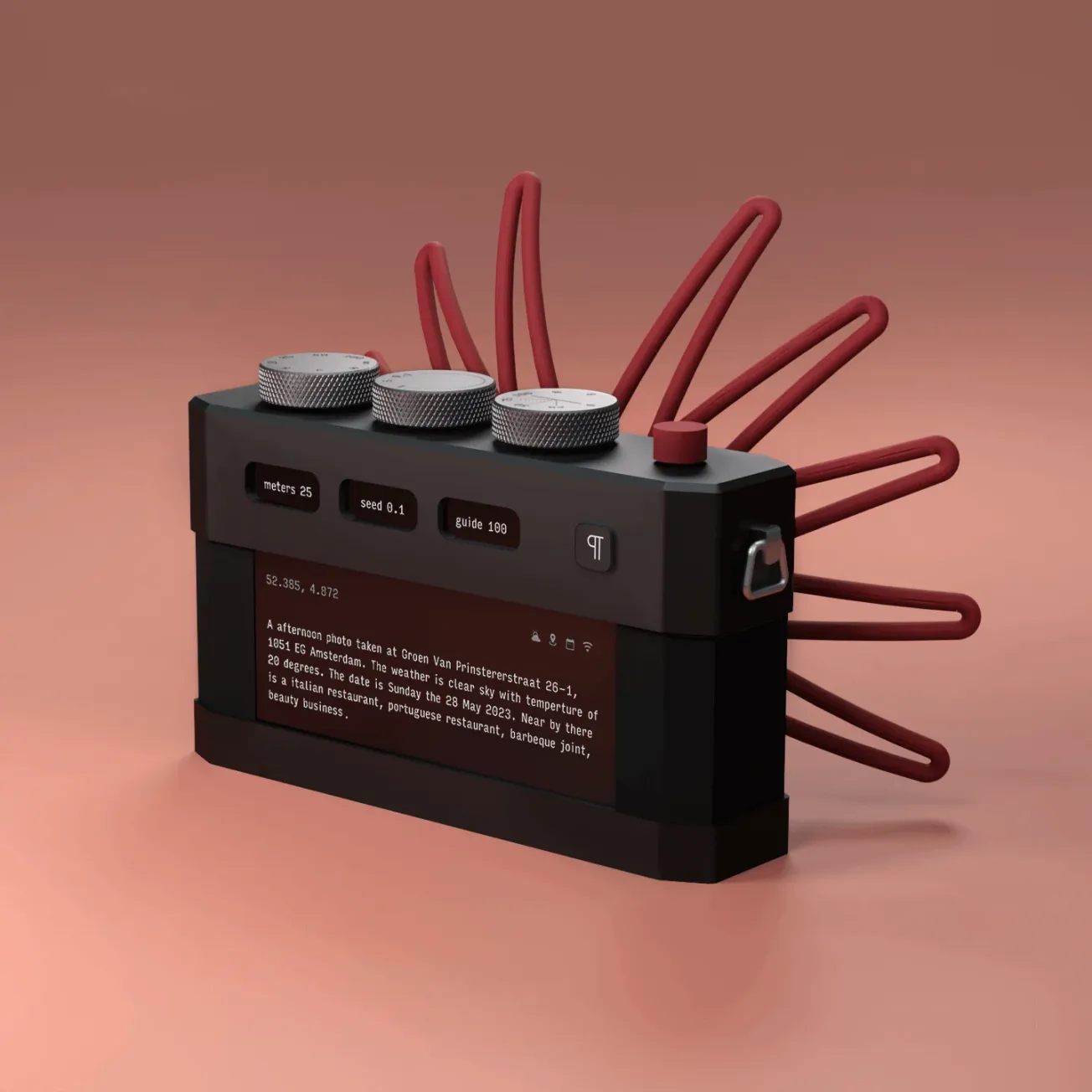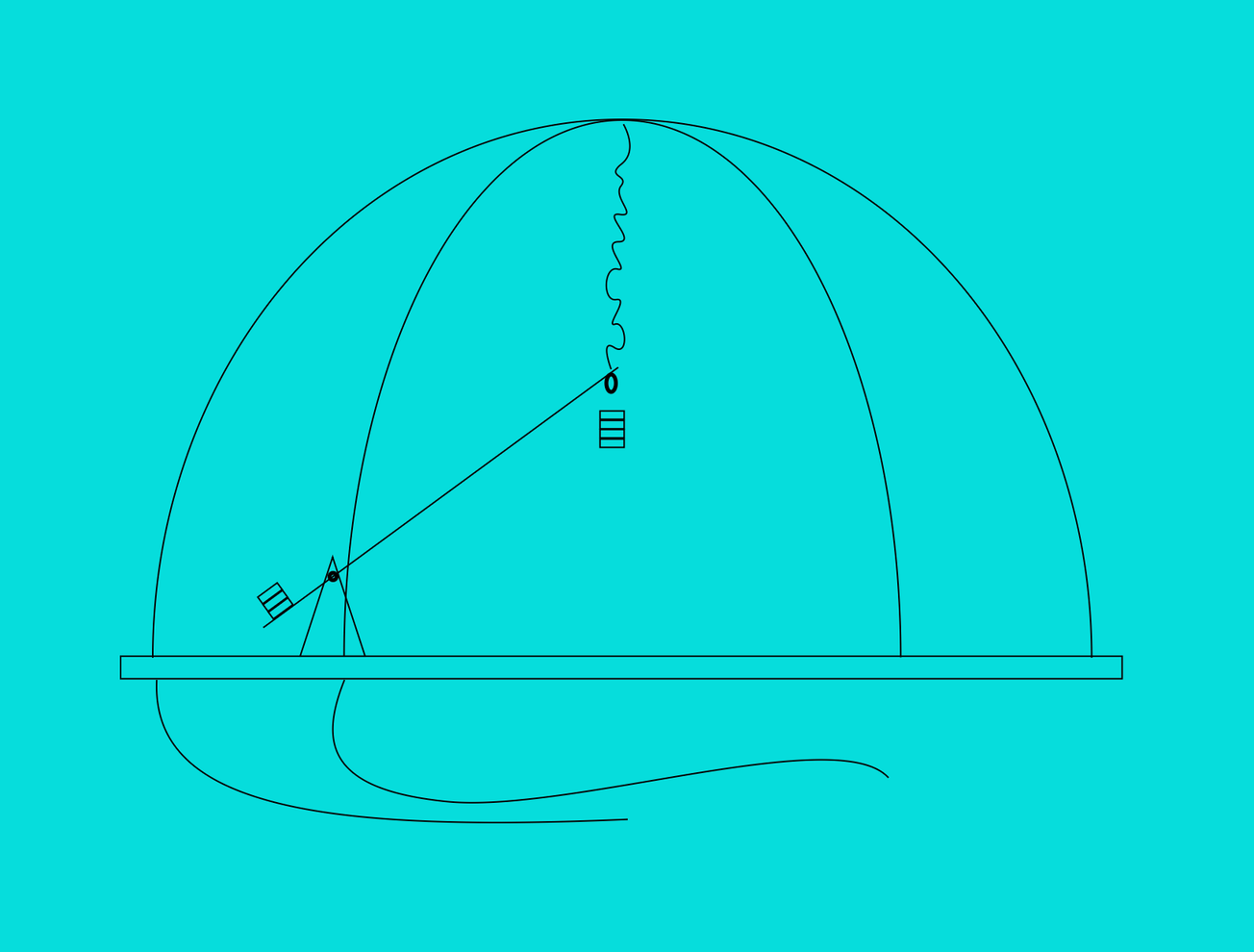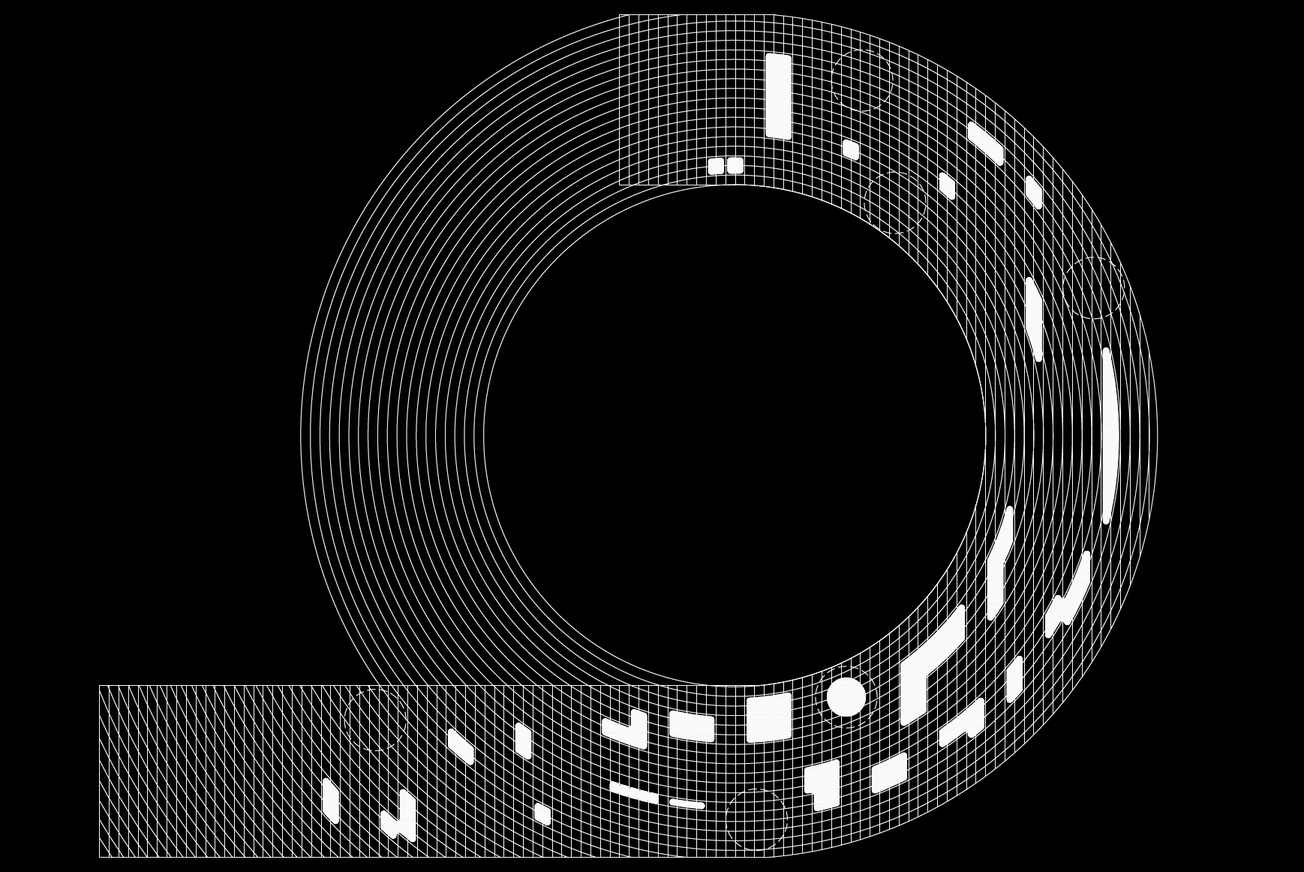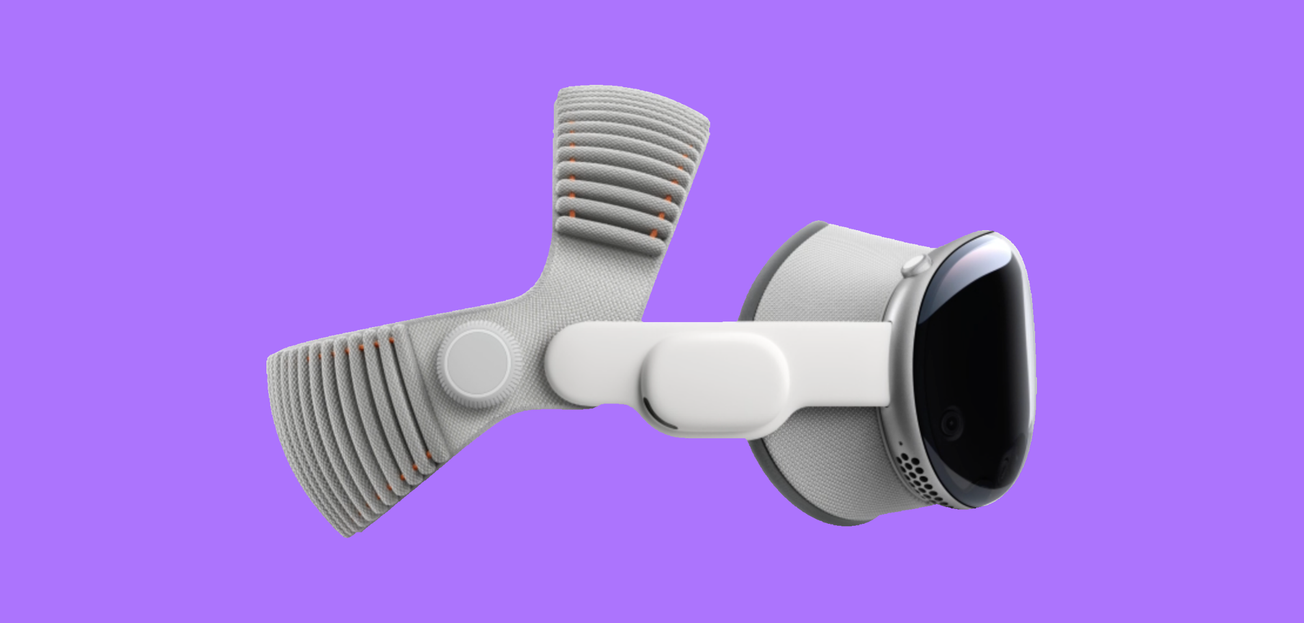At White Cube Bermondsey, Alien Shores: landscape, once removed considers the idea of landscape as something mutable, mediated, and to be technologically reframed. Within this context, Bagus Pandega and Kei Imazu’s Artificial Green by Nature Green 4.1 stands out as a live experiment in what happens when the traditions of landscape painting collide with the procedural logic of automation.
For those tracking the intersections of algorithmic image-making and machine authorship, this work is essentially an operational case study: a painting system that continuously produces, erases, and remakes a rainforest scene in an endless loop. There’s no final image to consume, only a process to witness and experience.
A Machine That Paints and Erases
The installation’s mechanical arm, programmed by the artists, alternates between adding and removing brushstrokes. The rainforest imagery is generated from a digital reference set rather than direct, on-site observation — a telling substitution that reflects how much of our environmental knowledge is now mediated through tools like Google Earth, satellite archives, and algorithmically curated image feeds. This live cycle of creation and erasure functions as a performance: the painting is never finished, always in transition. The “landscape” exists only in moments, dissolving as quickly as it appears.

Landscapes Once Removed
Historically, landscape painting has claimed to preserve a view in time. Artificial Green by Nature Green 4.1 dismantles that claim by revealing the instability of its own subject matter. The rainforest here is already an abstraction — a machine-readable construct built from data points rather than lived ecological experience. In this sense, the work echoes ongoing debates in generative installation art about how code redefines not just aesthetics, but our cultural memory of place. The machine becomes both tool and collaborator, actively shaping what “nature” looks like in this mediated context. By showing the algorithm’s hand — via the mechanical arm’s programmed movements — in every brushstroke, Pandega and Imazu turn simulation into a critical lens. There is no illusion of untouched wilderness here; the rainforest is always already filtered through systems of capture, reproduction, and deletion.
Questions Emerging from the Work
Artificial Green by Nature Green 4.1 raises questions that extend well beyond the gallery walls. If machines can semi-autonomously generate and erase cultural representations, the notion of authorship becomes unstable, shifting from a singular creative vision to a shared agency between human and machine. The automation of visual culture also reframes how environmental narratives are formed, replacing lived experience with mediated, continuously reconfigured images. In this context, landscape — once understood as a marker of permanence — becomes a provisional construct, vulnerable to endless revision and erasure.
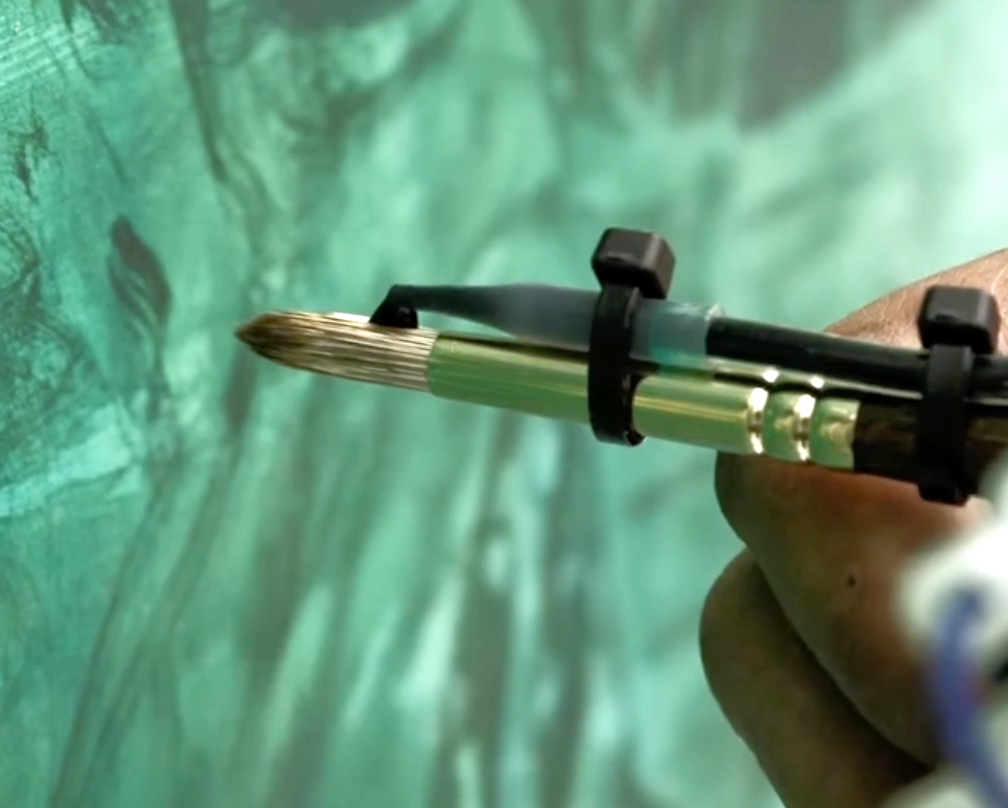
Within the Broader Exhibition
Curated by Susanna Greeves, Alien Shores assembles 34 artists to explore displacement, mediated experience, and psychological terrains. While other works in the show evoke estrangement through surreal or hybrid material forms, Artificial Green by Nature Green 4.1 uses the logic of automation to make the instability of place tangible. It refuses the fixed frame, instead presenting landscape as a system in constant flux.
Exhibition closes 7 September 2025

